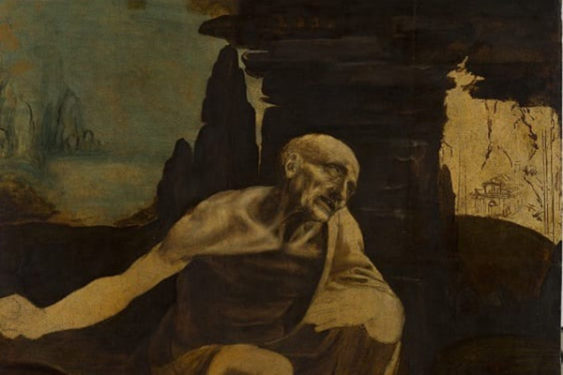
By Christopher White, The Tablet’s National Correspondent
NEW YORK – One year after the Metropolitan Museum of Art’s record-breaking exhibit on the Catholic imagination, the landmark museum is set to display a Vatican owned masterpiece beginning next week.
Beginning July 15, the museum will exhibit Leonardo da Vinci’s “Saint Jerome Praying in the Wilderness,” which is on special loan from the Vatican Museums.
The exhibition of the Renaissance painting, which is supported by the New York Chapter of The Patrons of The Arts in The Vatican Museums, is timed to coincide with the five hundredth anniversary of da Vinci’s death.
The painting of St. Jerome is unfinished and depicts the later years of his life when he lived as a hermit in the desert.
Art historian Elizabeth Lev told The Tablet that unlike other contested pieces, the St. Jerome painting has “near unanimous acceptance” as da Vinci’s work, despite the lack of documentary evidence.
The painting, Lev, noted, belonged to Angelika Kaufman – known as “the most cultured woman in Europe” and a painter herself, until she died in 1807, when it disappeared.
“It was rediscovered in two pieces – one alleged serving as a stool in a cobbler’s shop, by Napoleon’s uncle Cardinal Joseph Fesch and joined the collection in the mid 19th century,” said Lev.
As for its significance, Lev said that the St. Jerome is “another example of Leonardo penetrating into the mind of holiness.”
“Jerome, brilliant, successful, respected and powerful, leaves the comforts of his home to live closer to Christ in Bethlehem. Dwelling in a cave in perennial penance, he dedicates his exceptional language skills to making scripture more accessible to all,” she said. “His body, obviously once muscular, has wizened to sinew and bone, his posture, once proud, is hunched upon itself; Jerome resembles a cavernous space, emptying himself to be filled with Christ.”
Lev, the author of How Catholic Art Saved the Faith, said the technical aspects of the painting were vintage da Vinci.
“The face of faith, of service, and of penitence as only Leonardo could draw,” she told The Tablet. “The intimacy that drawing creates between the viewer and artist, makes one wonder, how much did the story of Jerome, communicator per excellence, resonate with Leonardo, the world’s greatest painter, as he looked for a place to settle and develop his skills.”
Last year’s Met exhibition, “Heavenly Bodies: Fashion and the Catholic imagination,” which included vestments from the Sistine Chapel sacristy, was the most visited exhibit in the history of the Museum.
Baruch College art historian Mar Morosse told The Tablet the two institutions, personified by the friendships between Barbara Jatta, who serves as the director of the Vatican Museums, and Met curator Carmen Bambach is one of the primary reasons the Met is able to display the masterpiece, which rarely leaves Italy.
Bambach, she noted, is an expert in da Vinci, and she said the friendship between the two women, and the recent success of last year’s exhibit, have only strengthened ties between the Vatican and the Met.
In September, Jatta will travel to New York to give a lecture at the Met in conjunction with the exhibit.
“The Met is a global museum unlike any other in the world,” said Morosse. “And both the Vatican Museums and the Met have high standards for excellence.”
Lev concurred, telling The Tablet “the Vatican Museums has used art as a means to build bridges and create bonds with people of all faiths, backgrounds and cultures for centuries.”
“From the foundation of the museums to the loan of Raphael’s works to both Germany and England under Benedict XVI, as well as the reliquaries and vestments sent to the Met’s Heavenly Bodies exhibit last year, the Catholic Church has proposed beauty as a means to cross cultural borders and recount universal truths in a compelling way,” said Lev.
The painting of “Saint Jerome Praying in the Wilderness” will be on display in New York until October 6.
